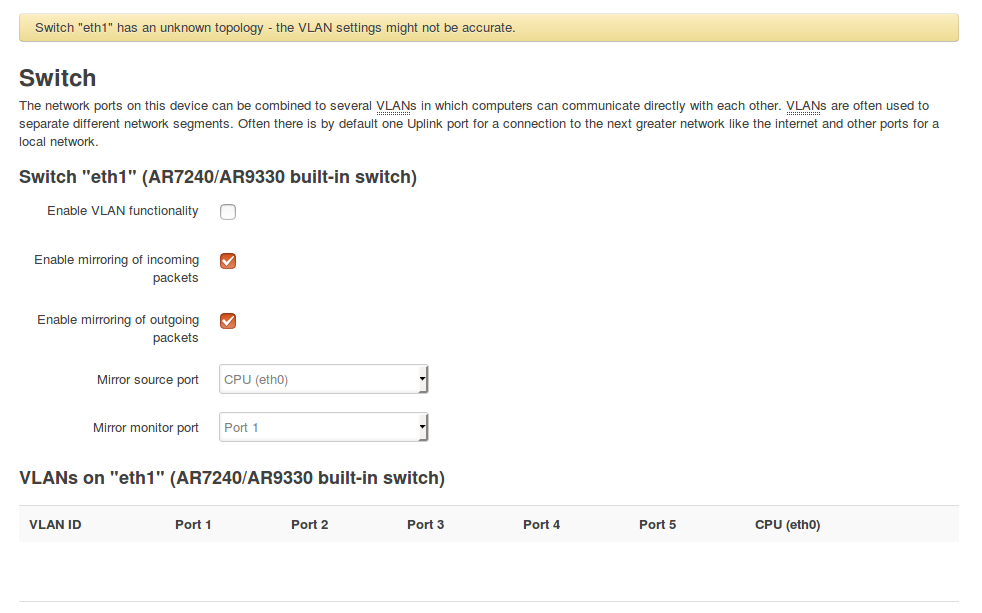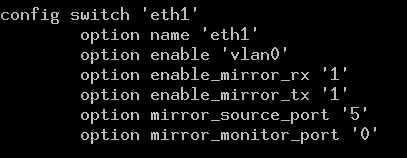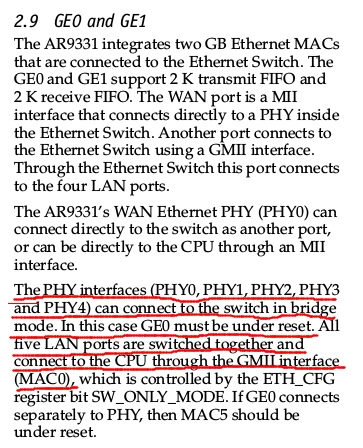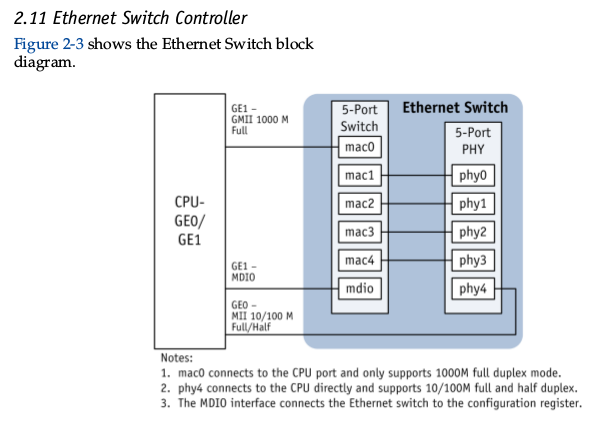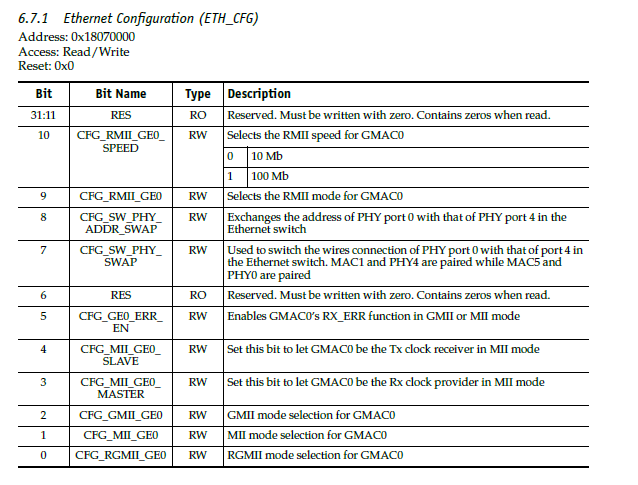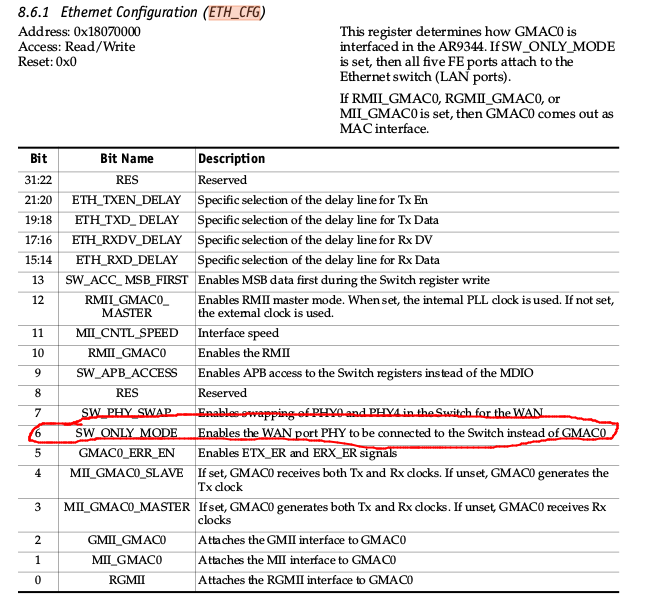Hi Psyborg,
thank you for Your patience. I am very new to linux.. imagine about embedded ones.
ar150 uses 9330(or 9331)soc carambola2 uses the same chipset, TP-LINK TL-WR940N v4 too.
So my idea was to figure out the difference between the 3 machines surfing the openwrt build directory.
I found differences in target/linux/ath79/base-files/etc/board.d/02_network
and in all files in target/linux/ar71xx/files/arch/mips/ath79/
like mach-gl-ar150.c, mach-wifi-pineapple-nano.c, mach-tl-wr940n-v4.c
in these last ones
like ar150 says ..
.......
/* disable PHY_SWAP and PHY_ADDR_SWAP bits */
ath79_setup_ar933x_phy4_switch(false, false);
................
/* register eth0 as WAN, eth1 as LAN */
ath79_init_mac(ath79_eth0_data.mac_addr, art+GL_AR150_MAC0_OFFSET, 0);
ath79_init_mac(ath79_eth1_data.mac_addr, art+GL_AR150_MAC1_OFFSET, 0);
ath79_register_mdio(0, 0x0);
ath79_register_eth(0);
ath79_register_eth(1);
......................
wifi pineapple:
...........
ath79_setup_ar933x_phy4_switch(false, false);
ath79_register_mdio(0, 0x0);
ath79_init_mac(ath79_eth0_data.mac_addr,
art + WIFI_PINEAPPLE_NANO_MAC1_OFFSET, 0);
ath79_register_eth(0);
..............................
tl-wr940n-v4.c
....................
ath79_init_mac(ath79_eth0_data.mac_addr, mac, 1);
ath79_init_mac(ath79_eth1_data.mac_addr, mac, -1);
ath79_switch_data.phy4_mii_en = 1;
ath79_register_eth(0);
ath79_register_eth(1);
......................................
then with a different SOC (ar9344 with switch AR8327) wndr4300 :
..............................................
ath79_setup_ar934x_eth_cfg(AR934X_ETH_CFG_RGMII_GMAC0);
mdiobus_register_board_info(wndr4300_mdio0_info,
ARRAY_SIZE(wndr4300_mdio0_info));
ath79_register_mdio(0, 0x0);
/* GMAC0 is connected to an AR8327N switch */
ath79_eth0_data.phy_if_mode = PHY_INTERFACE_MODE_RGMII;
ath79_eth0_data.phy_mask = BIT(0);
ath79_eth0_data.mii_bus_dev = &ath79_mdio0_device.dev;
ath79_eth0_pll_data.pll_1000 = 0x06000000;
ath79_register_eth(0);
...........................................
inside target/linux/ar71xx/base-files/etc/board.d/02_network
#!/bin/sh
Copyright (C) 2011-2015 OpenWrt.org
. /lib/functions/system.sh
. /lib/functions/uci-defaults.sh
ar71xx_setup_interfaces()
{
local board="$1"
case "$board" in
..............
wifi-pineapple-nano|\
..........
gl-ar150|\
.....................
tl-wr940n-v4|\
........................
wndr4300)
ucidef_add_switch "switch0"
"0@eth0" "1:lan:4" "2:lan:3" "3:lan:2" "4:lan:1" "5:wan"
...................................
My questions are:
1--- target/linux/ar71xx/base-files/etc/board.d/02_network
defines the UCI configuration after the network devices are already loaded in the kernel ? yes or no ?
(is it the right wording or should I say something different) ?
2--- the only references to interfaces are the ath9_register_eth(0) in the mac-XXX files
are these files responsible for the loading or configuration of the network device driver definition in the kernel ?
(is it the right wording or should I say something different) ?
3-- how if is possible (I could borrow the 4300 set up and apply it to ar150 to have the 2 ethernet sockets
(the plug on my minirouter) be handled by the built in switch ??
Remember everything started from the ar9331 datasheet claiming about the built-in switch
4-- why in the
target/linux/ar71xx/files/arch/mips/ath79/Kconfig.openwrt:
.....
config ATH79_MACH_GL_AR150
bool "GL AR150 support"
select SOC_AR933X
select ATH79_DEV_ETH
select ATH79_DEV_GPIO_BUTTONS
select ATH79_DEV_LEDS_GPIO
select ATH79_DEV_M25P80
select ATH79_DEV_USB
select ATH79_DEV_WMAC
...................
there is nothing about a switch ? I mean I could be wrong but to me sounds like
select ATH79_DEV_ETH will load a driver for ethernet controller/devices/whathever ?(right ? wrong)?
why I dont have anything related to switch ??
5-- what is the 03_network-switchX-migration in target/linux/ar71xx/etc about ?
in some lines I can read:
............................
rb-2011uas-2hnd)
migrate_switch_name "eth0" "switch0"
migrate_switch_name "eth1" "switch1"
..............................
So eth0 could refer to both a switch or a normal single physical interface ??
How I can distinguish between them ?
Hope my question are clear to You, to me they are kind out of the logic I think I its behind openwrt
but I feel I am kind far from the right track at the moment.
THanks
P.
